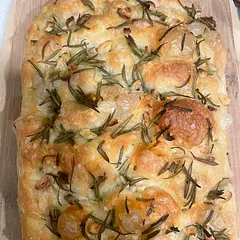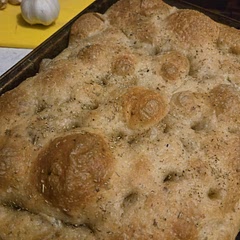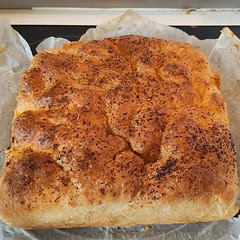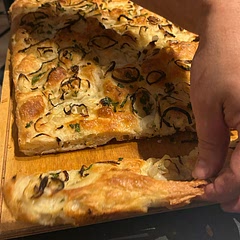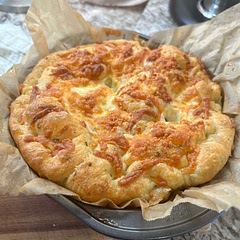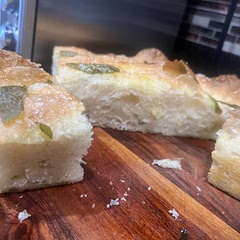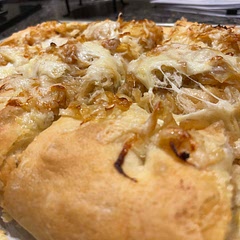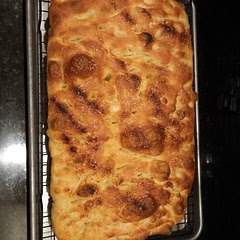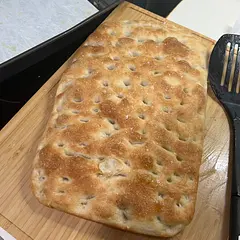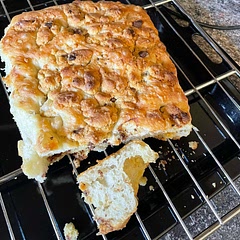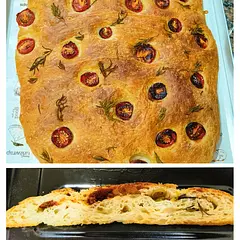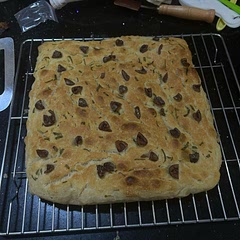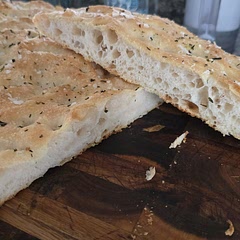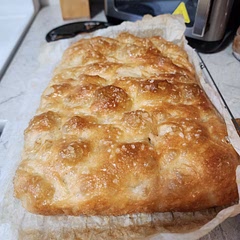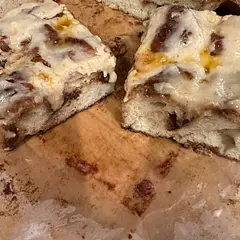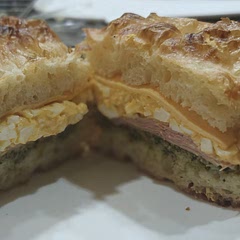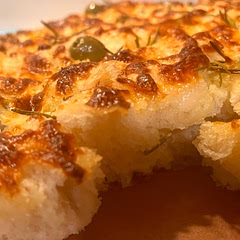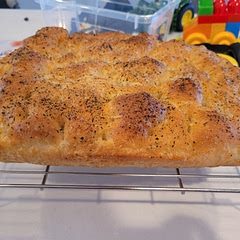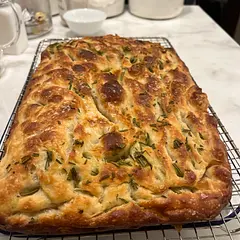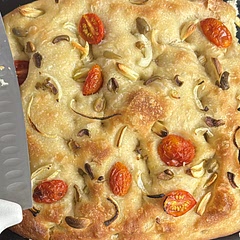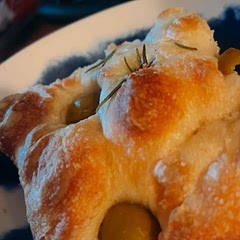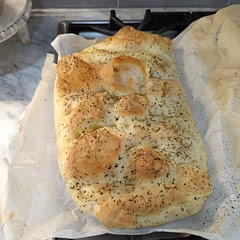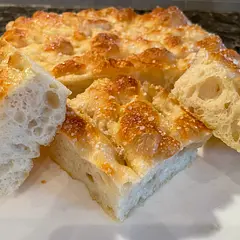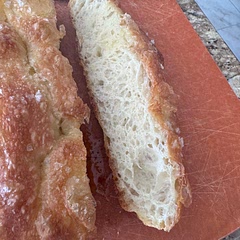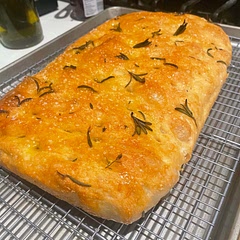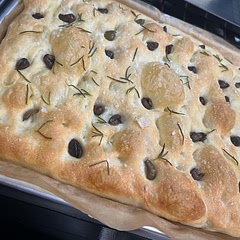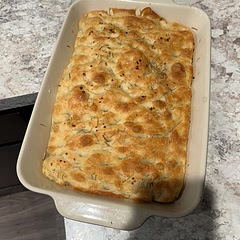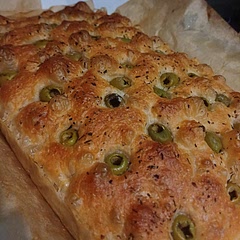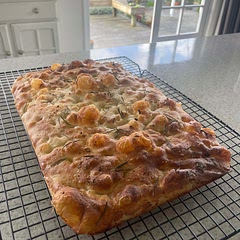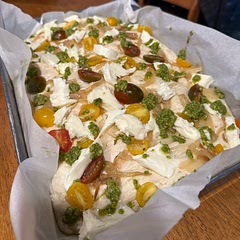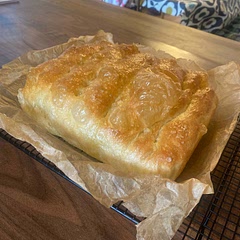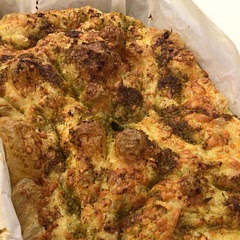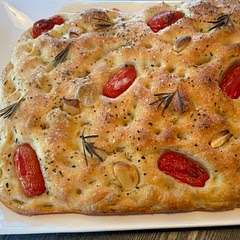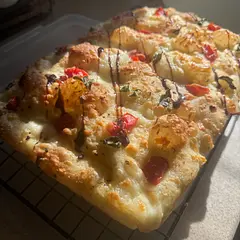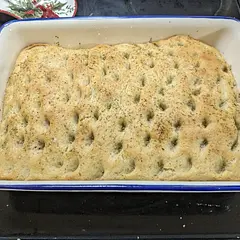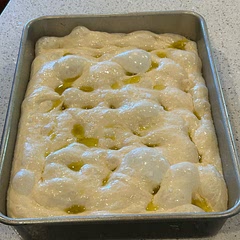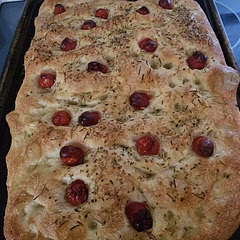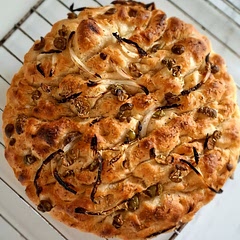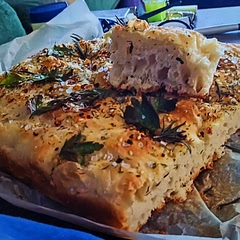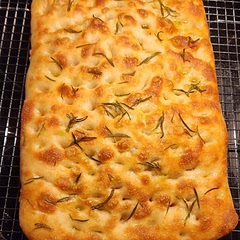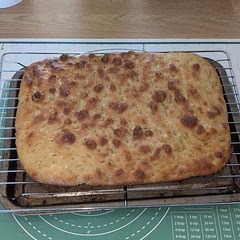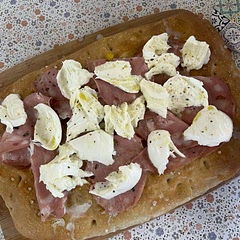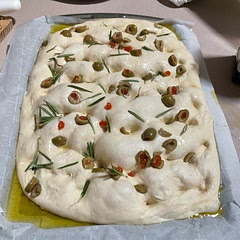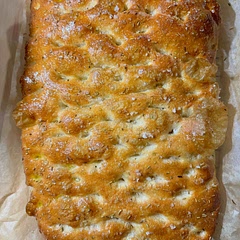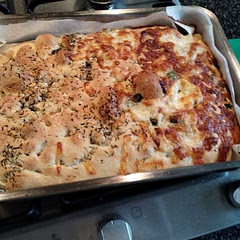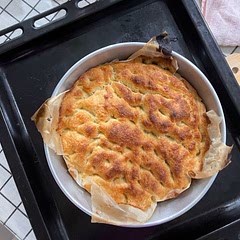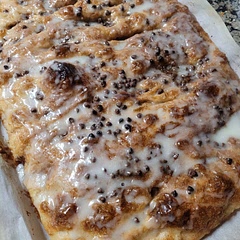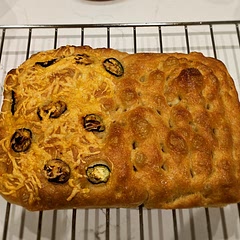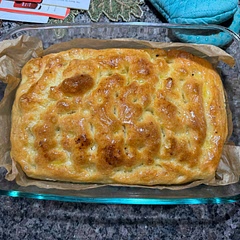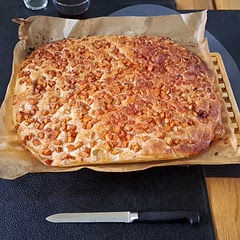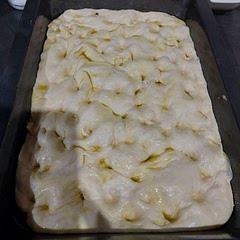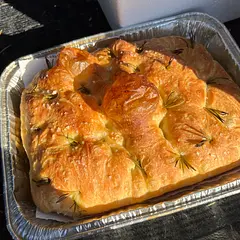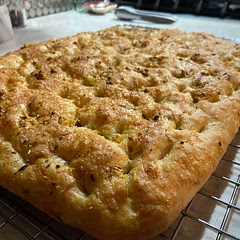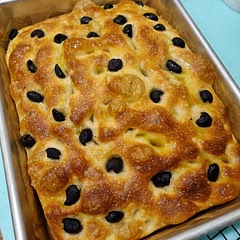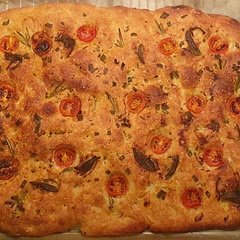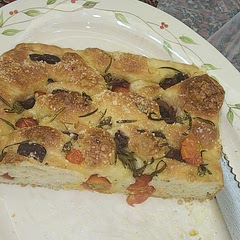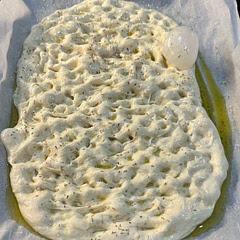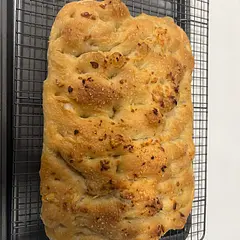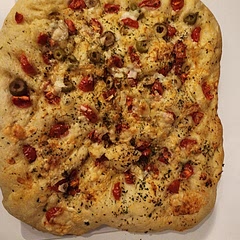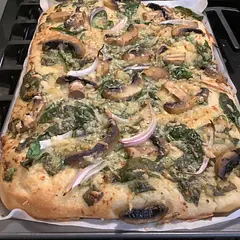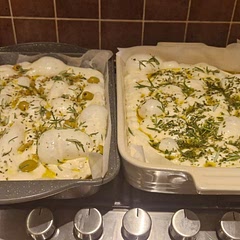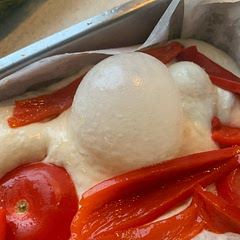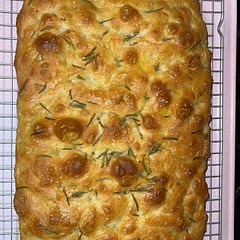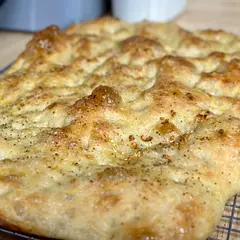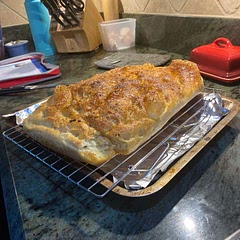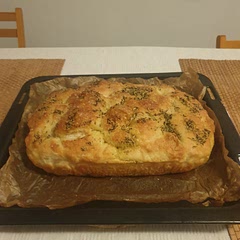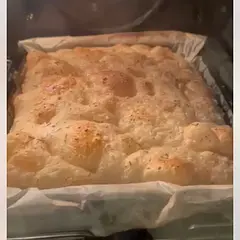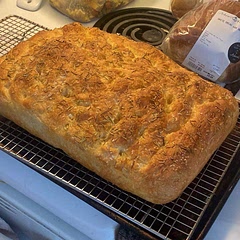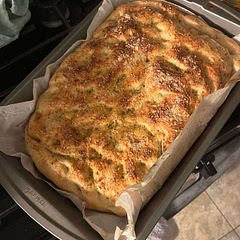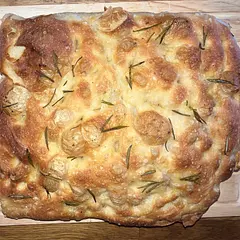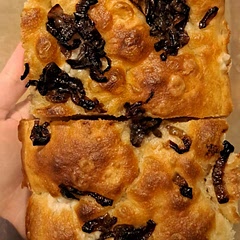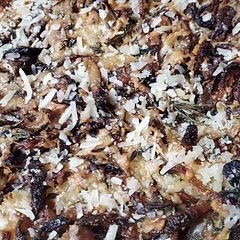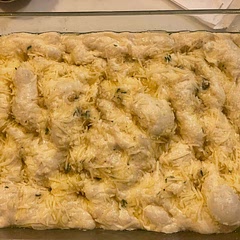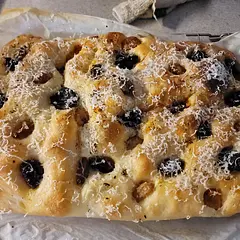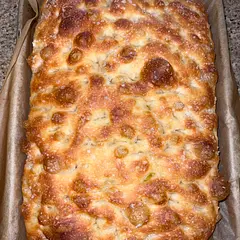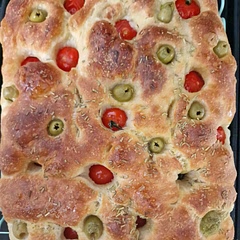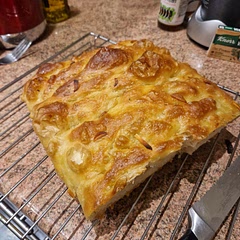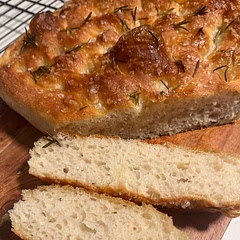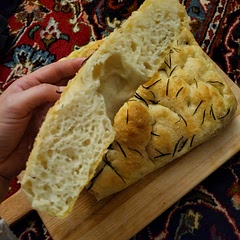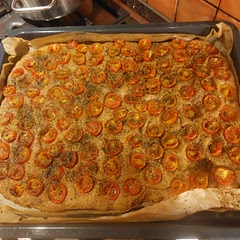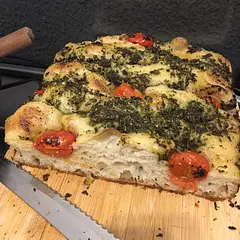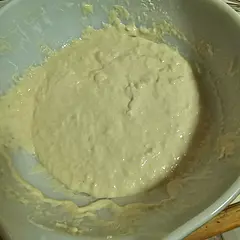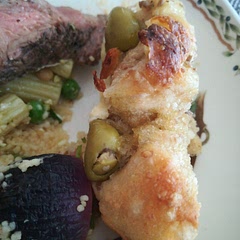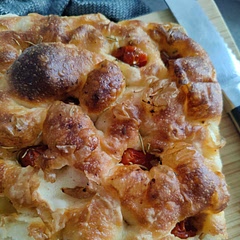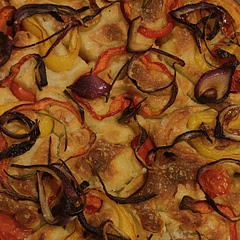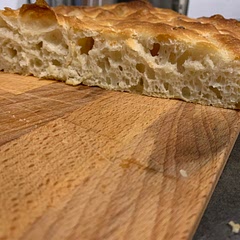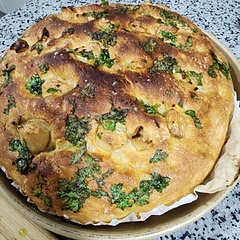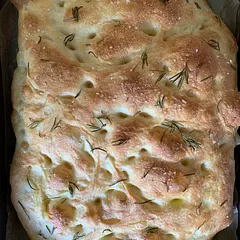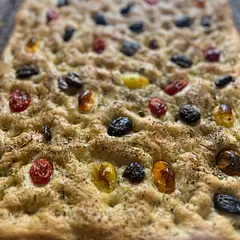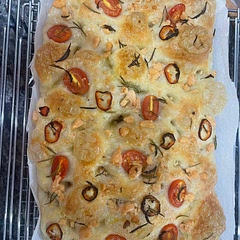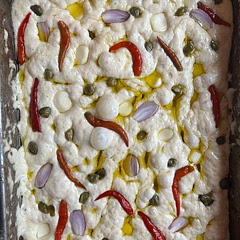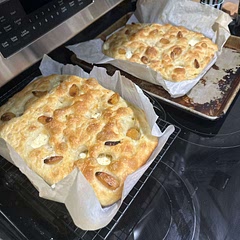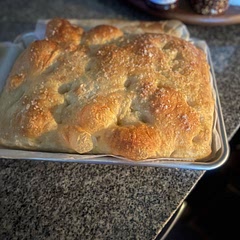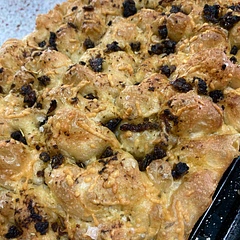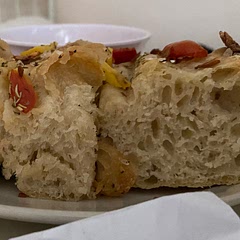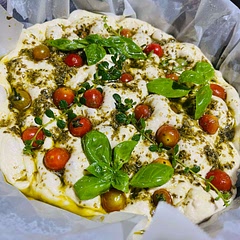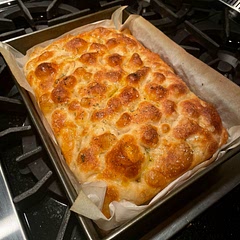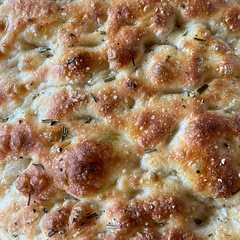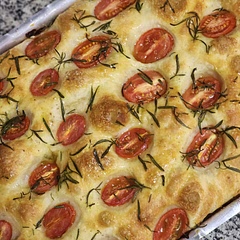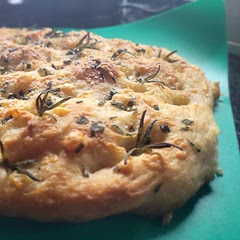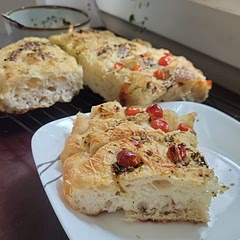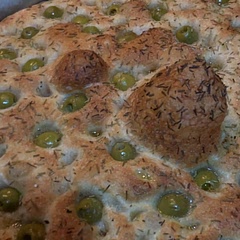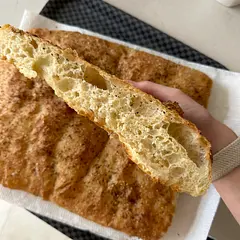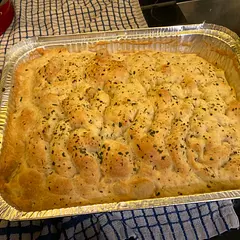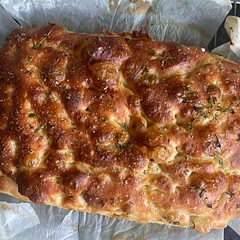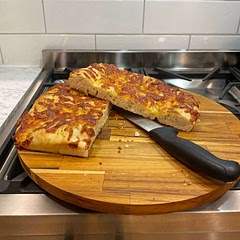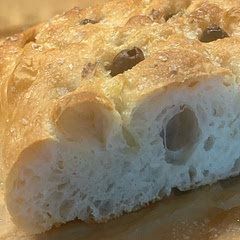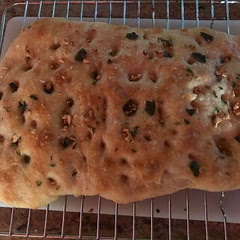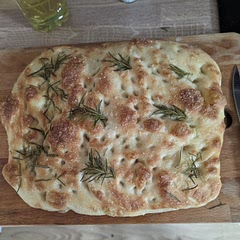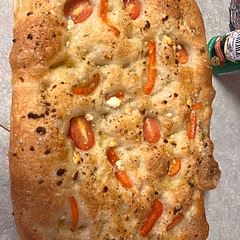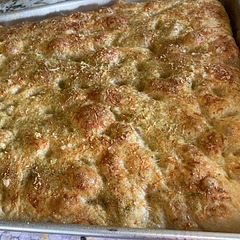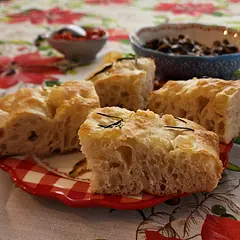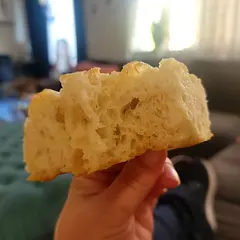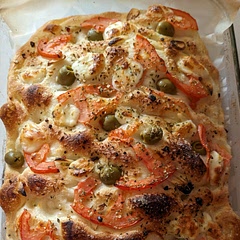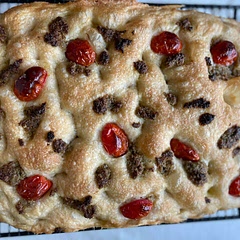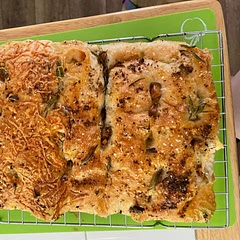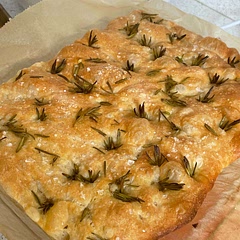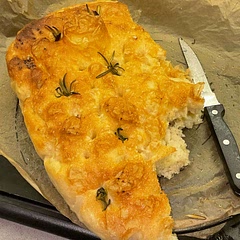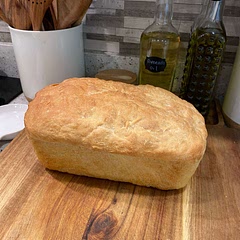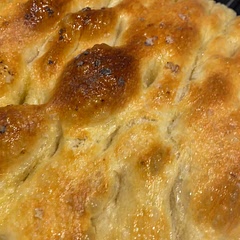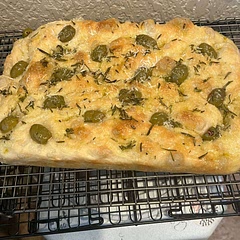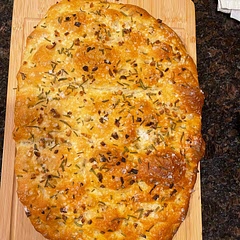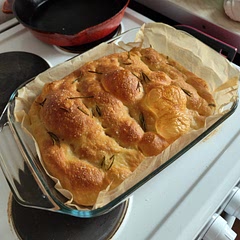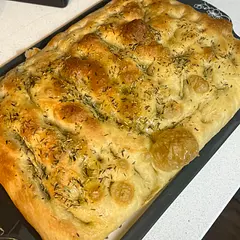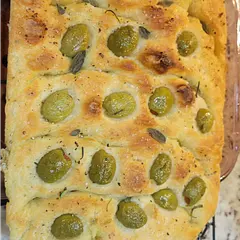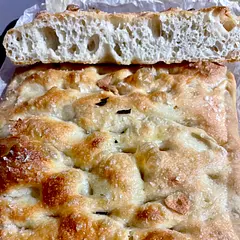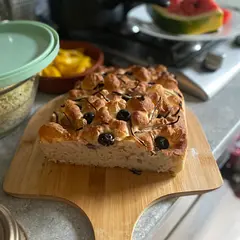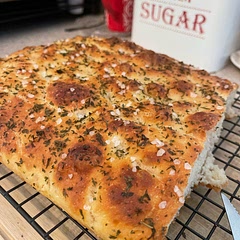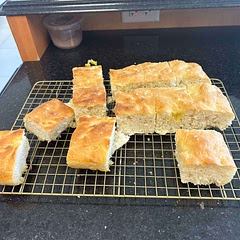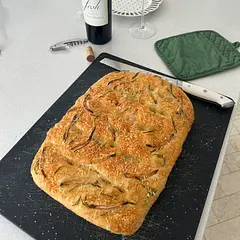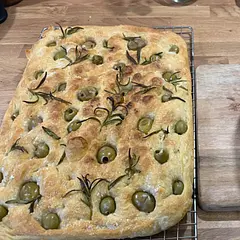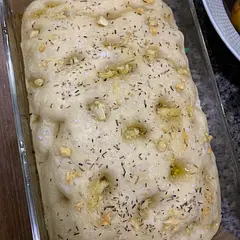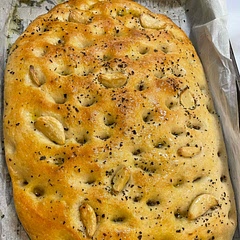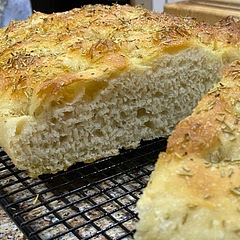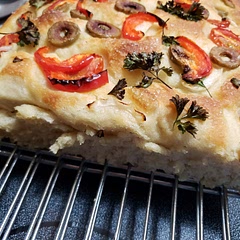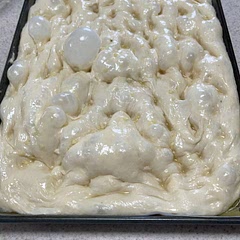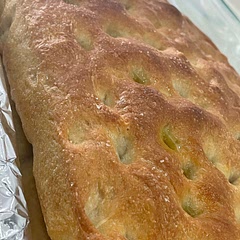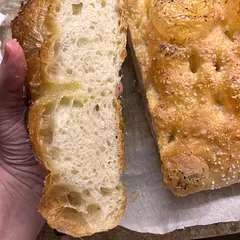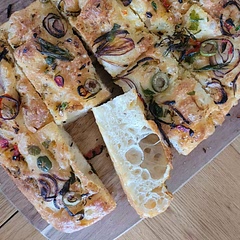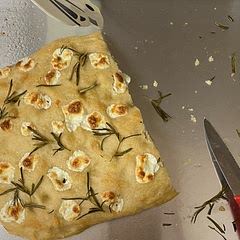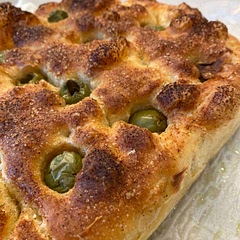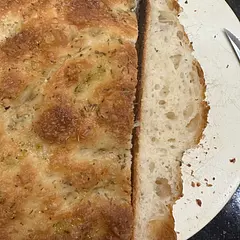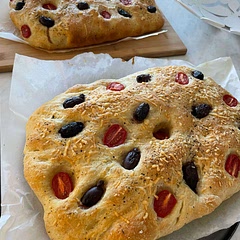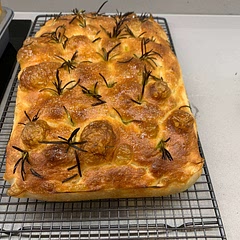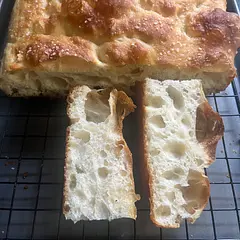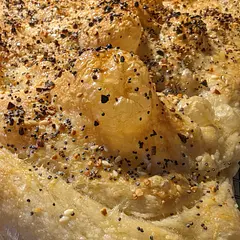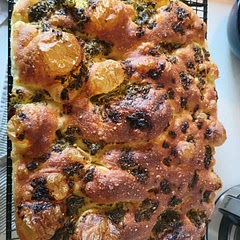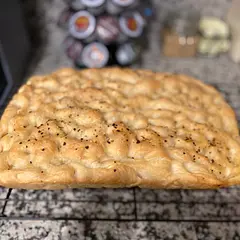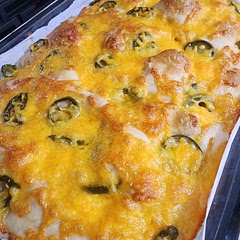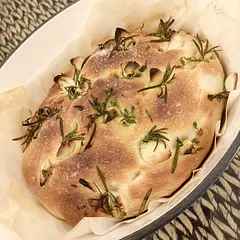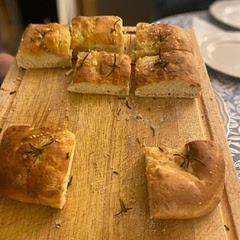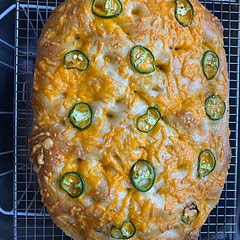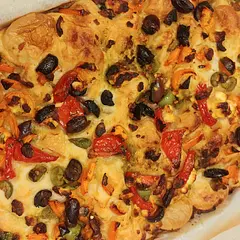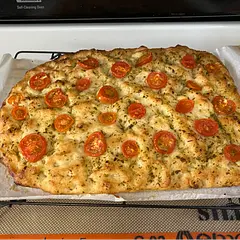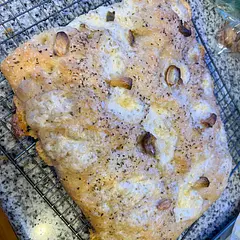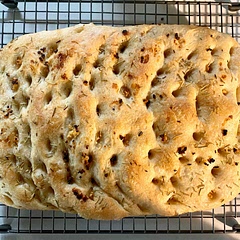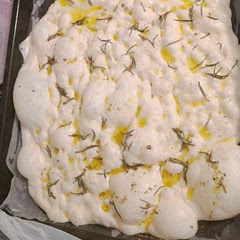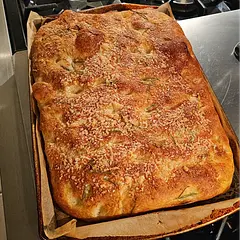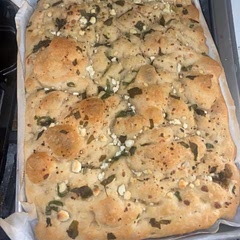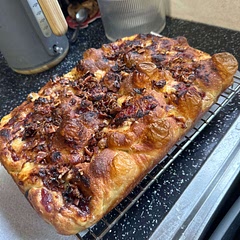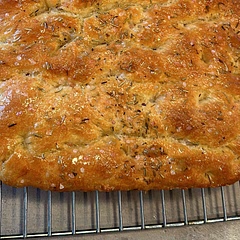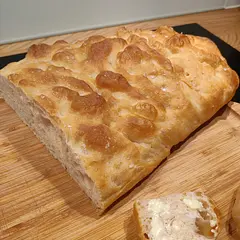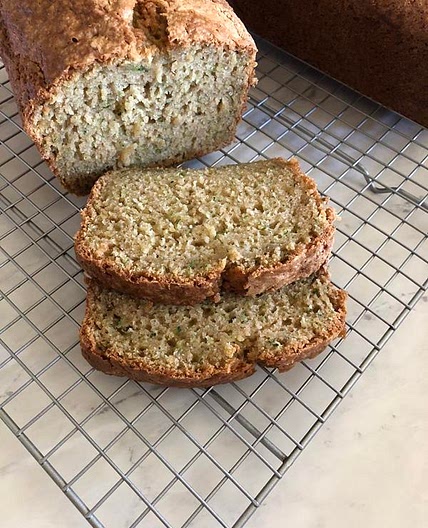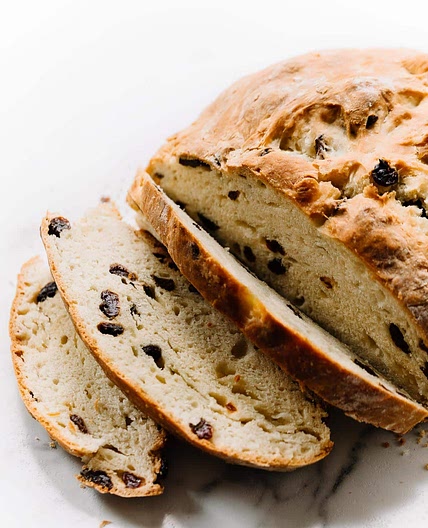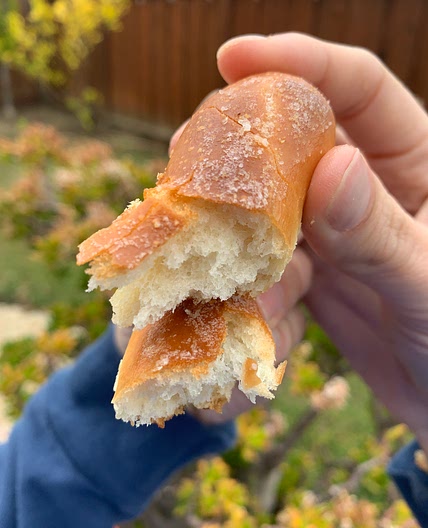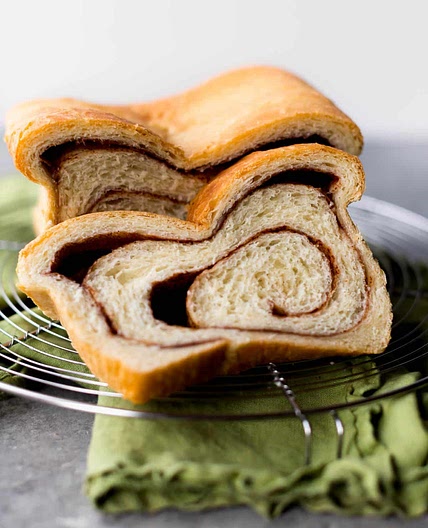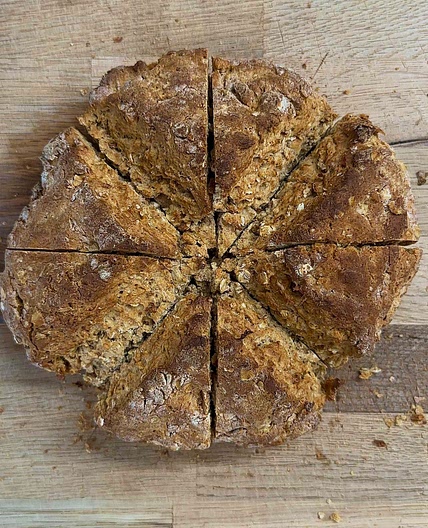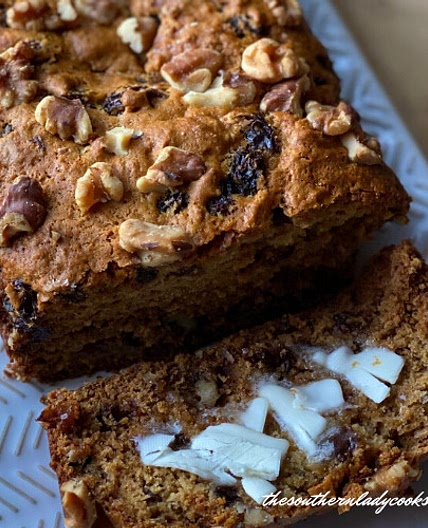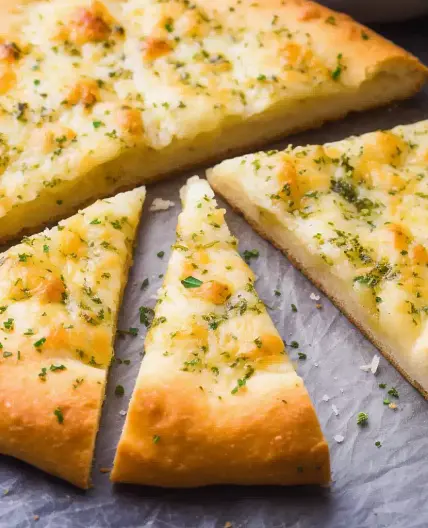
1/10

2/10

3/10

4/10
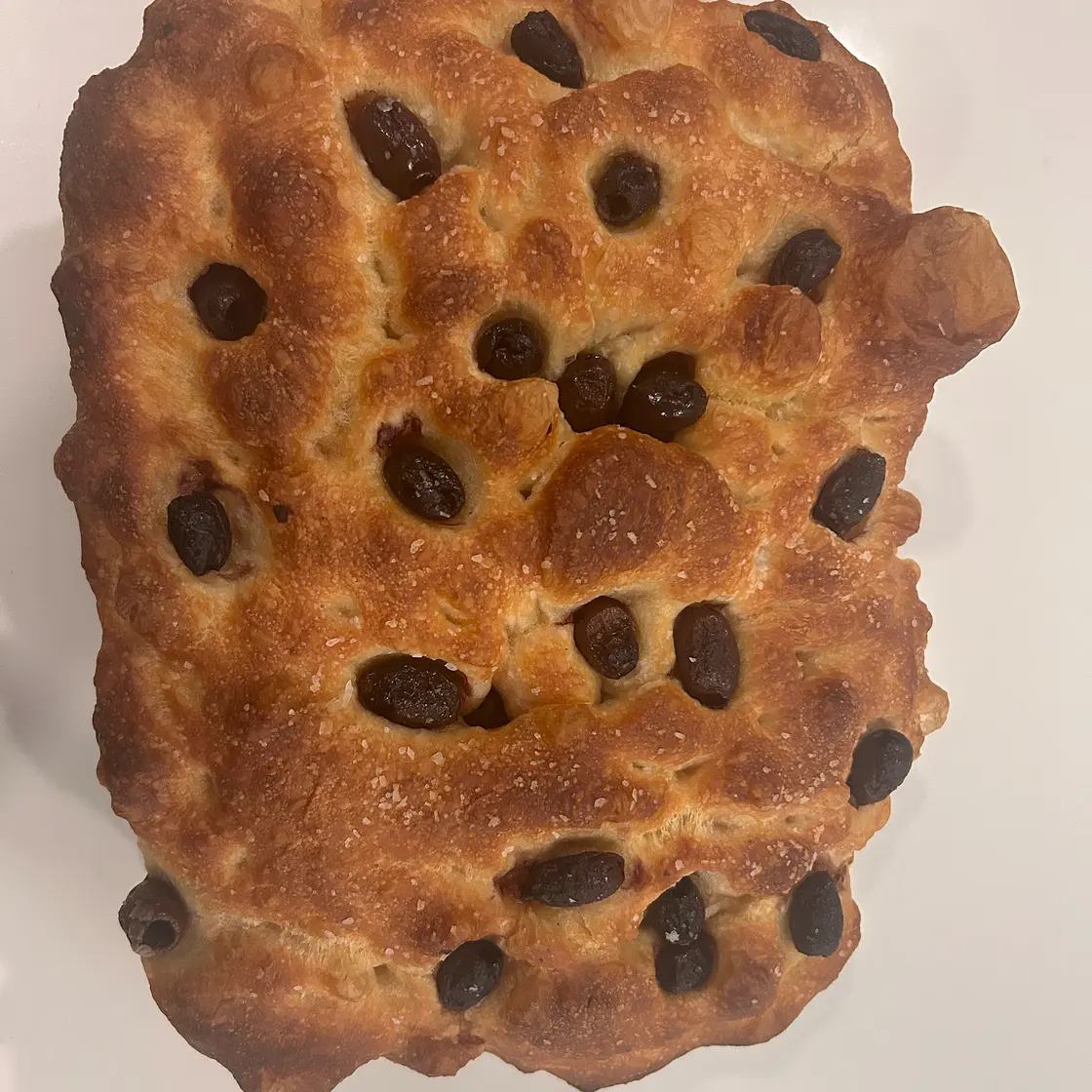
5/10
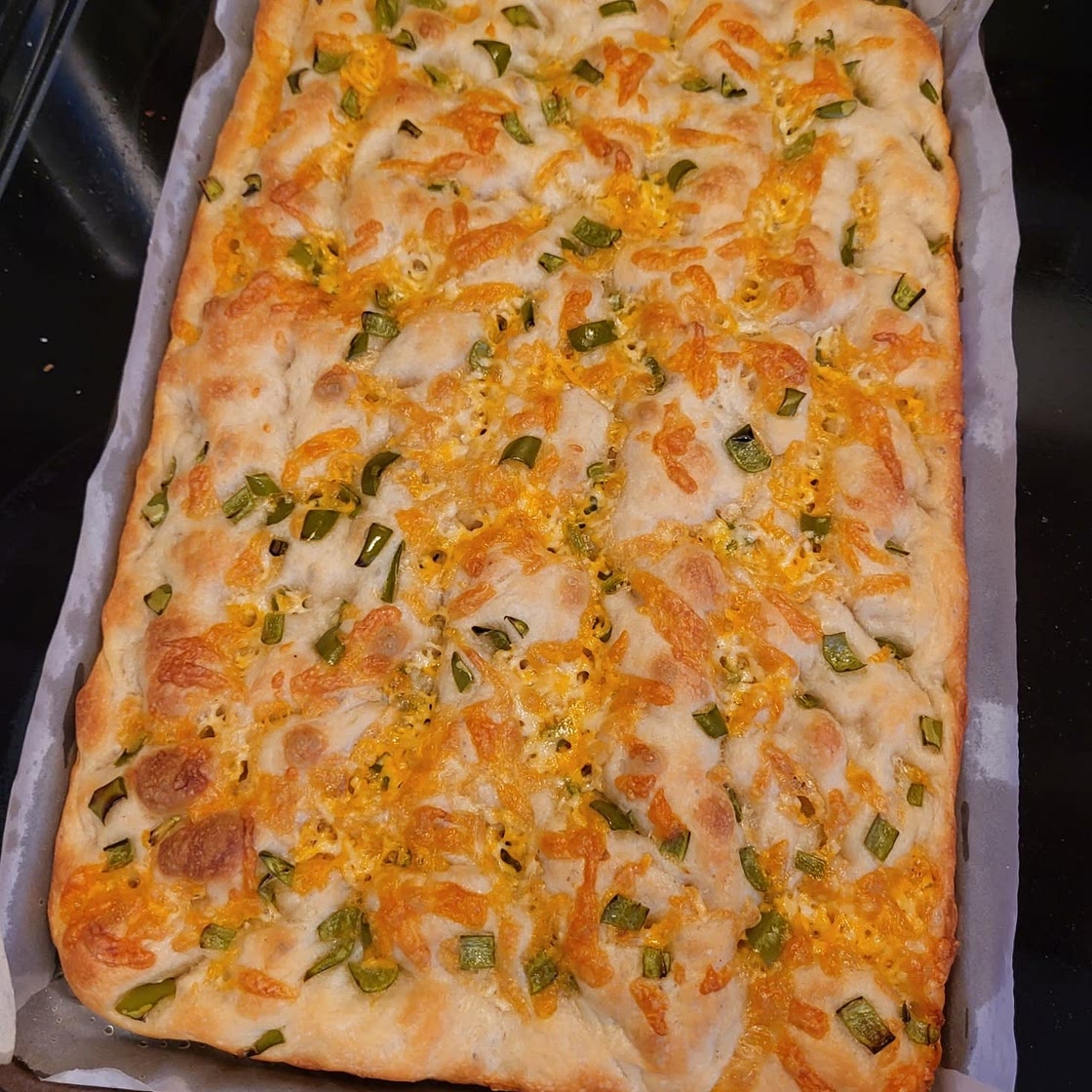
6/10

7/10

8/10
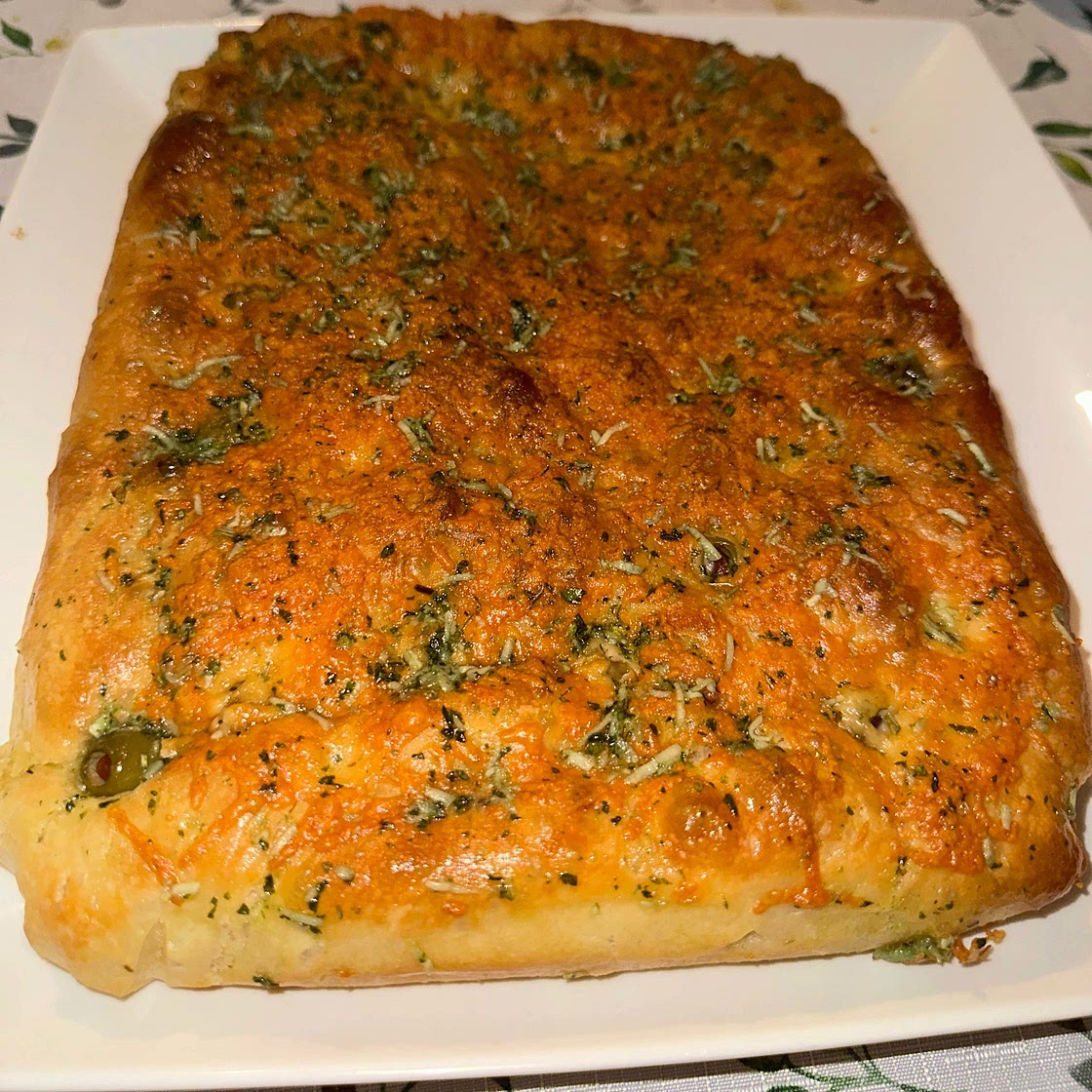
9/10
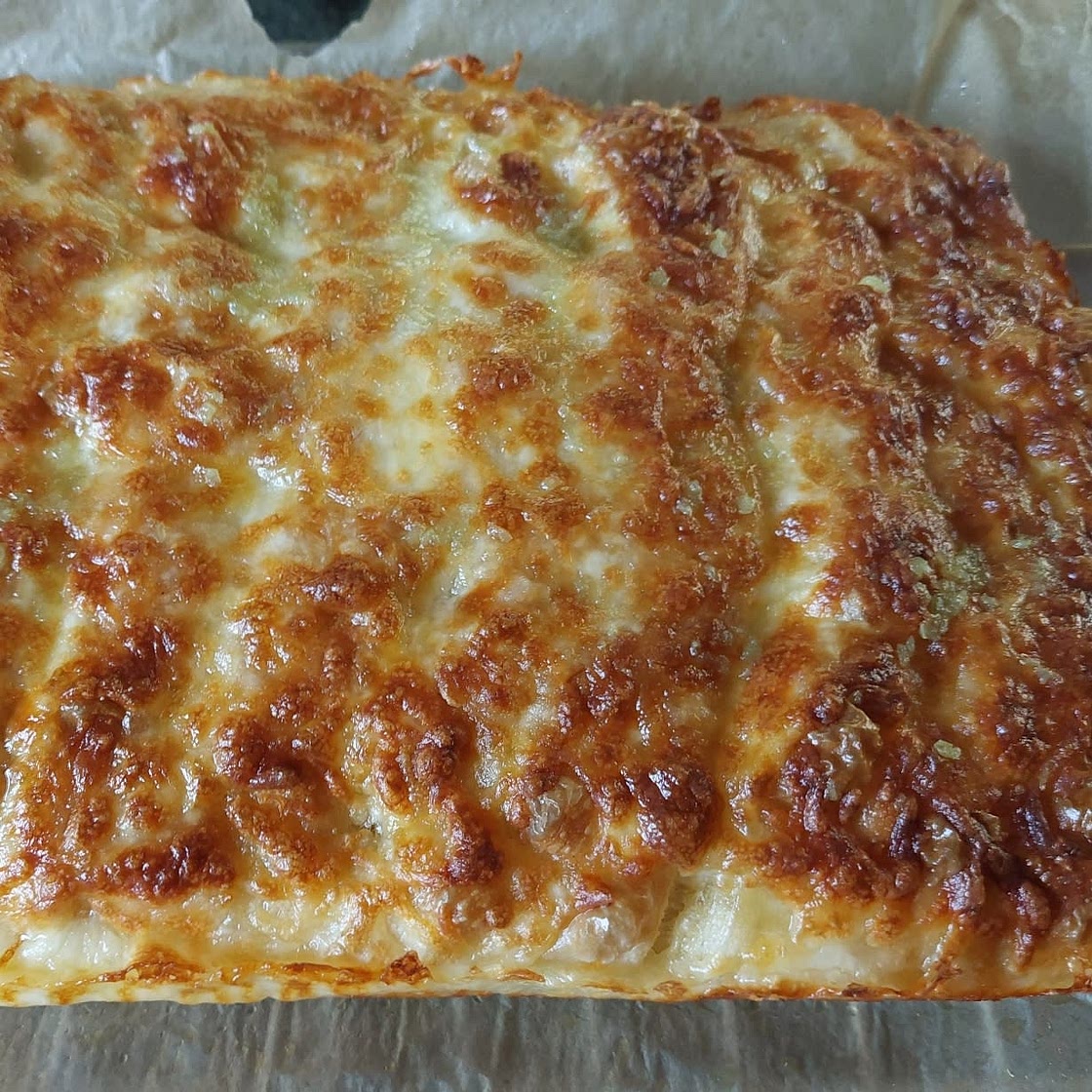
10/10
95%
355
By Lacey (Lace Bakes)
Easy Same-Day Focaccia
24 steps
Prep:3h 30minCook:22min
If you are a focaccia fan, you may have already tried my viral Overnight Focaccia recipe (see my Whisk Profile and Lace Bakes Community on Whisk). It's been enormously popular for good reason: it's quick and easy to mix, you can forget about it overnight in the fridge and it produces a beautiful, bubbly interior when it's baked up the following day. The long, slow proofing time does a lot of the work for you and improves the flavour and texture of the focaccia. BUT! I've listened to feedback, and there are a good handful of you that want your bread on the SAME DAY! Fair enough, I understand needing bread NOW! This Easy Same-Day Focaccia recipe is an adaptation of my Overnight Focaccia recipe. I still think the focaccia is improved with an overnight slow proof, but you can still achieve an excellent focaccia within 4 hours from the time you mix your dough to the moment it comes out of the oven using the recipe and method below.
Updated at: Thu, 02 Nov 2023 07:40:56 GMT
Nutrition balance score
Good
Glycemic Index
72
High
Glycemic Load
23
High
Nutrition per serving
Calories222.5 kcal (11%)
Total Fat7.3 g (10%)
Carbs32.5 g (13%)
Sugars1.3 g (1%)
Protein6.3 g (13%)
Sodium446.6 mg (22%)
Fiber1.5 g (5%)
% Daily Values based on a 2,000 calorie diet
Ingredients
12 servings
500gwhite bread flour
12% protein content or higher
420gwater
warm, a bit warmer than your body temperature
6gINSTANT YEAST
If using “active dry yeast”,, you must add 2 grams extra, 1/2 teaspoon, and mix it with the warm water and honey and let it bloom/become frothy for 5-10 minutes before adding other ingredients
5ghoney
sub maple syrup or granulated sugar to make vegan
15gextra virgin olive oil
10gfine sea salt
Essential Toppings
Optional Topping Ideas
Instructions
Mixing, Stretch + Folds and First Proofing
Step 1
In a large mixing bowl, whisk together the warm water, instant yeast, honey, extra virgin olive oil and fine sea salt until evenly combined. Tip your bread flour into the bowl with the rest of the ingredients and mix with a spoon until all dry flour patches have disappeared. Place cloth or reusable cover over top of bowl, let rest for 15 minutes at room temperature.
Step 2
After 15 minutes, you will perform a stretch + fold. This helps to develop the gluten in the dough which will help with the structure of the bread. Wet your hand (this prevents dough from sticking to you), grab a handful of dough from the 12 o’clock position, pull it up slightly and then pull it all the way up and over the bulk of the dough to the 6 o’clock position. Repeat this action on all sides of the dough until it feels like you’ve created tension and you can’t stretch the dough up and over anymore…it should have tightened up into a rough ball. Let rest for 15 minutes and then repeat the stretch + fold action one more time.
Step 3
After the second set of stretch and folds, wet your hands, gather your dough and place it seam side down into bowl so the top is quite smooth (this helps prevent air bubbles from escaping).
Step 4
Cover the bowl and leave the dough to continue to proof in the bowl for 1.5 hours at room temperature.
Preparing Tray + Second Proofing
Step 5
Prepare your 9” x 13” (22cm x 33cm) baking tray. Put a tiny bit of oil on the tray, rub it all around and then place a sheet of nonstick parchment paper on top and press down. The oil helps the parchment to stick in place. Then drizzle about 2-3 tablespoons of olive oil on the parchment paper and spread it evenly around the base and sides of the paper lining the tray/pan. The nonstick parchment prevents the focaccia from sticking to the tray when baking.
Step 6
Using a curved dough scraper, gently release the dough from the sides of the bowl and tip the dough into your oiled and lined tray.
Step 7
Now, you are going to oil your hands and fold one side of dough towards the middle of the blob of dough. Repeat with the other side, a bit like folding a piece of paper into thirds (it will look a bit like a burrito). Then flip the dough so the seams from the folding are at the bottom and the smooth side is at the top.
Step 8
Cover using another tray, inverted - this prevents the dough from drying out and forming a crust while it rises. If you don’t have another tray, a plastic storage box can work too. Do not cover the dough with plastic wrap or a tea towel, it will stick.
Step 9
Let sit to proof at room temperature for about 1.5 hours. The dough should be mostly filling the space in the tray at this point. If it’s not filling the space after this period of time, oil your hands and from the underside of the dough you gently pull it towards the edges of the tray. The timing will depend on the temperature on the day. If it’s a very hot day it might only take 1.25 hours to puff up/spread in tray. On a very cold day it could take 2 hours.
Dimpling, Topping + Baking Your Focaccia
Step 10
Once you think the dough has finished proofing (it will be floofy and jiggly when you shake the tray), it’s time to preheat your oven to 220C/430F.
Step 11
Drizzle the top of the dough with a little more extra virgin olive oil and then oil your hands. Using both hands, press your fingers into the dough, gently touching the bottom of the tray. Repeat until the entire tray of dough is dimpled. There is such a thing as too much dimpling though…you can lose some of the nice bubbles you’ve created in the dough if you dimple too much. Just be mindful of air pockets and try not to pop them…these bubbles are what make the crumb of a focaccia so interesting and delicious.
Step 12
Top with a sprinkle of flaky sea salt. Add anything you’d like to the top by gently pressing toppings into the little dimples: olives, rosemary (coat in a bit of oil so it doesn’t burn), cherry tomatoes, onions, jalapeños + cheese. Before dimpling, you could top with basil pesto or with my chimichurri sauce if using oily toppings like these, then omit the drizzle of olive oil.
Step 13
I always bake my focaccia for about 18-22 minutes in a 220C/430F oven. I bake it on the lowest rack in the oven because I think it helps to crisp the bottom of focaccia and prevent the top from burning. If you have a pizza setting in your oven, use that; the main heat source will come from the bottom, which I think is ideal for baking focaccia. Check the focaccia after 18-20 minutes and remove from oven when it’s reached a deep golden brown colour. I've learned that every oven is so different so don't worry about overbaking it if it takes closer to 25-30 minutes in your oven. The interior will still remain soft! If this is the case and it takes on the longer side, even up to 35 mins, I’d recommend upping your oven temp for the next time (turn up by 10-20 degrees), it could just be your oven runs a little on the cooler side.
Step 14
Let it cool for a couple of minutes in the pan and then transfer it to a cooling rack so the bottom doesn’t steam while sitting in the tray. You'll want it to stay nice and crispy at the bottom.
Step 15
You can top with more olive oil when it’s come out of the oven if you wish for it to look burnished and glistening. If I’ve topped the focaccia with pesto or chimichurri I don’t tend to do this. With other toppings I do a little drizzle and it soaks right into the crust when it’s hot out of the oven.
Step 16
Let cool for at least 15-20 minutes before cutting in!
NOTES ON FREEZING FOCACCIA
Step 17
It’s best enjoyed fresh the same day, but if you’d like to save some for the next day, wrap it in foil to store and then pop into oven (still in foil) and bake at 180C/355F for about 10-15 minutes. It will bring it back to life. It can also be wrapped in foil and frozen. Bake in foil straight from frozen at 200C/395F for about 15 minutes. Peel back the foil to expose the top of the focaccia and bake for an additional 2-3 minutes to crisp up the top.
NOTES ON FLOUR
Step 18
TYPE OF FLOUR: You will get the best results using white bread flour with 12% protein content or higher. So for every 100g of flour, there are 12 or more grams of protein listed in the nutritional count. To calculate this, take note of the serving size on your pack of flour - it's normally 30g. Then check the grams of protein per serving and multiply this by whatever number you need to for the serving size to be 100g. So if there are 4g protein per/30g flour, then multiply 4g x 3.33 to see how much protein there is in 100g. In this case it would be 13.32g of protein per 100g.
Step 19
WHY DO I NEED HIGH PROTEIN FLOUR? My favourite flour for focaccia is Canadian/Manitoba bread flour which is 15% protein, but normal bread flour is also fine! The focaccia can hold its air bubbles inside more efficiently when you use flour with a higher protein content. This is because more protein generally means stronger gluten, and gluten is what gives your bread structure.
Step 20
I realise that bread flour is not readily available in some countries. I hope that focusing on the protein content helps you narrow down your choices. If you can only find plain/all purpose flour with a protein content of 9-10%, I’d recommend reducing the water in the dough by 30g -40g. Using flour with a lower protein content will mean your focaccia will probably not have many big air bubbles. I would not recommend using whole grain/whole wheat flours in focaccia. The fibre content of these flours mean your focaccia will probably be dense, not fluffy. If you really want to incorporate whole grain flours, start by only adding in 50% whole grain flour. Be aware that you may need to up the water content when using wholegrain flour and make sure you manage your expectations for the amount of bubbles you'll achieve!
NOTES ON EQUIPMENT
Step 21
WHAT EQUIPMENT DO I NEED? - digital kitchen scale
- large mixing bowl
- 9”x13” (23cm x 33cm) baking pan or tray
- curved dough scraper (you can do without this but it helps you to easily remove the focaccia dough from the bowl when it’s time to transfer it to pan) -nonstick parchment/baking paper
Step 22
CAN I MEASURE WITH CUPS? If you intend to bake bread, you will need to invest in a digital kitchen scale in order to ensure precise measurements. Measuring flour/water in cups leaves too much room for user error. Digital scales ensure that you're following the recipe properly.
NOTES ON YEAST
Step 23
Make sure your yeast is in date, and if it's a big container of yeast, be sure it was opened recently (within last 3/4 months). Yeast loses its oomph over time.
Step 24
I find that instant yeast is easiest because you don’t need to let the yeast bloom/activate before mixing the dough and you can mix everything together all at once. If you are using active dry yeast, use 1/2 teaspoon/2g extra and mix with warm water and honey. Let sit for 5-10 minutes to bloom before adding in the other ingredients. If you are using fresh yeast, use 18g. Dissolve with the the warm water and honey and let bloom for 5-10 minutes before adding in other ingredients.
View on Click for Same-Day Focaccia Tutorial
↑Support creators by visiting their site 😊
Notes
1797 liked
81 disliked
Delicious
Go-to
Easy
Crispy
Fresh


